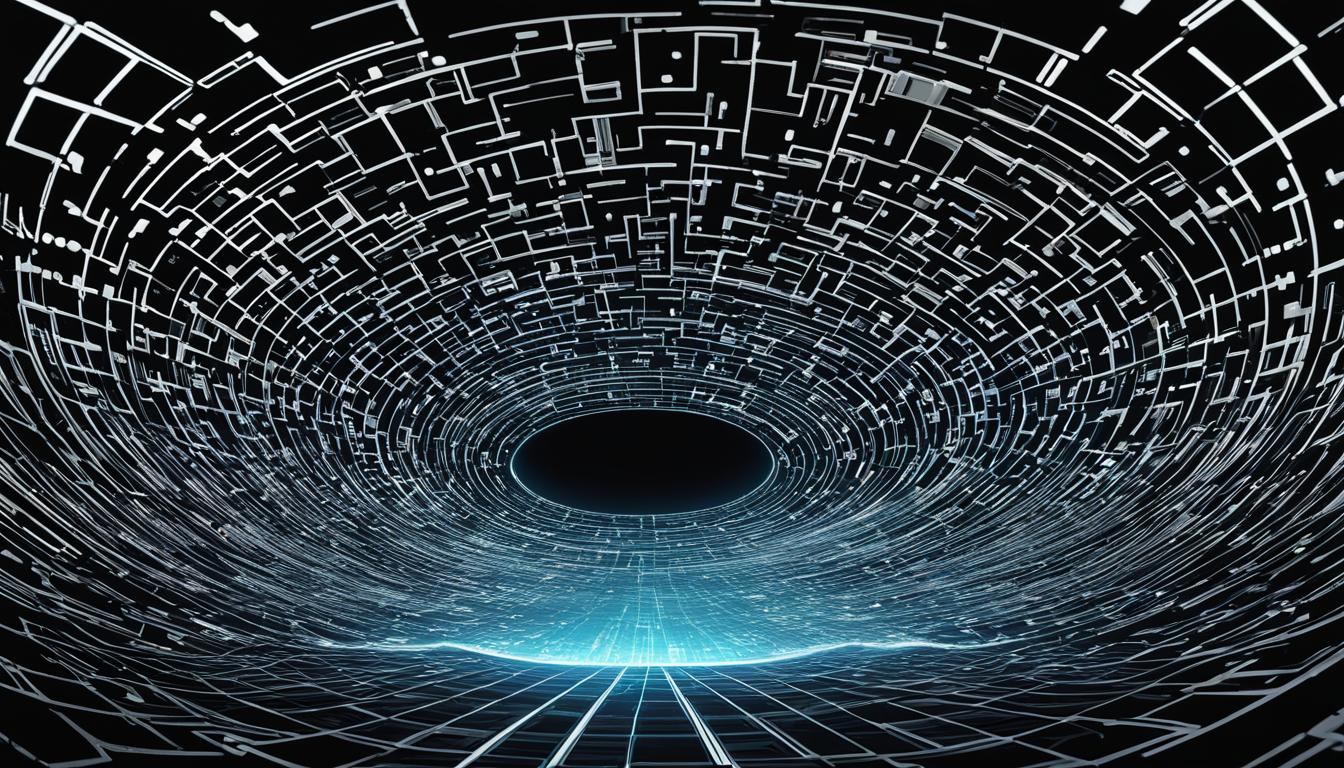If you’ve ever wondered how computers are able to think and interact like humans, you may have come across the term “Turing Test” in the field of artificial intelligence (AI). In this article, we will explore what the Turing Test is, how it works, and its significance in the development of AI.
The Turing Test, named after the pioneering computer scientist Alan Turing, is a method used to determine whether a computer can exhibit intelligent behavior indistinguishable from that of a human. It involves a conversation between a computer, two humans, and a questioner. The goal is for the computer to convincingly respond to questions in a way that the questioner cannot distinguish it from the human participant.
By passing the Turing Test, a computer would demonstrate an ability to think, reason, and communicate like a human. It has been a long-standing challenge in AI research and serves as a benchmark for evaluating the development of intelligent machines.
Contents
- 1 History of the Turing Test
- 2 Limitations and Criticisms of the Turing Test
- 3 The Life and Contributions of Alan Turing
- 4 Conclusion
- 5 FAQ
- 5.1 What is the Turing Test in Artificial Intelligence?
- 5.2 How was the Turing Test developed?
- 5.3 What are the limitations of the Turing Test?
- 5.4 Are there alternatives to the Turing Test?
- 5.5 How is the Turing Test relevant to current AI applications?
- 5.6 Who was Alan Turing and what were his contributions?
- 5.7 What is the connection between the Turing Test and chess?
- 5.8 Why is the Turing Test significant?
- 6 Source Links
Key Takeaways:
- The Turing Test is a method of inquiry in AI that assesses whether a computer can mimic human-like intelligent behavior.
- Named after Alan Turing, the test involves a conversation between a computer, two humans, and a questioner.
- If the computer can successfully deceive the questioner into believing it is human, it is considered to have passed the Turing Test.
- The Turing Test is a foundational benchmark in AI and has sparked ongoing discussions and research in the field of machine intelligence.
- Passing the Turing Test signifies the ability of a computer to think, reason, and communicate like a human.
History of the Turing Test
In the fascinating history of artificial intelligence (AI), one significant milestone stands out—the Turing Test. Named after the brilliant English mathematician and computer scientist Alan Turing, this test aims to determine whether a machine can exhibit intelligent behavior indistinguishable from that of a human. To understand the origins and principles of the Turing Test, we need to delve into its history.
Alan Turing introduced the Turing Test in his groundbreaking 1950 paper, “Computing Machinery and Intelligence.” However, the test can trace its roots back to an earlier concept known as “The Imitation Game.” In the original test, three participants were involved—a questioner and two respondents. One of the respondents was a machine. Turing proposed that if the machine could successfully deceive the questioner into believing it was the human participant, it would demonstrate intelligence.
“We can only see a short distance ahead, but we can see plenty there that needs to be done.” – Alan Turing
Over the years, researchers and AI enthusiasts have developed variations and alternatives to the Turing Test to address its limitations and explore different aspects of AI evaluation. These developments have helped refine our understanding of machine intelligence and fostered advancements in the field.
The Evolution of the Turing Test
While the original Turing Test involved a single questioner and two respondents, subsequent variations have expanded on this concept. Researchers have explored different settings, such as group interrogations and reverse Turing Tests, where machines evaluate the human participants’ intelligence. These variations allow for a more comprehensive assessment of AI capabilities.
The Principles Behind the Turing Test
The Turing Test is built on two key principles: natural language processing and the ability to simulate human-like responses. By engaging in conversations and emulating human communication patterns, AI systems strive to convince questioners of their human identity.
The goal of the Turing Test is not to determine whether machines possess human-like consciousness but rather to evaluate their ability to mimic human behavior in conversation. This evaluation helps measure the progress of AI research and encourages the development of more sophisticated AI systems.
| Turing Test Principles | Description |
|---|---|
| Natural Language Processing | AI systems must interpret and generate human language to participate in conversations effectively. |
| Simulating Human Responses | AI systems aim to imitate human-like behavior and responses to convince questioners of their human identity. |
By understanding the history and principles of the Turing Test, we can appreciate its significance in shaping the field of AI and evaluating machine intelligence. The next section will delve into the limitations and criticisms that have emerged regarding this iconic test.
Limitations and Criticisms of the Turing Test
The Turing Test, although a groundbreaking concept in evaluating machine intelligence, has faced considerable criticism for its limitations and challenges. It is essential to explore these criticisms to gain a comprehensive understanding of the test’s shortcomings and the need for alternative evaluation methods.
Limitations of the Turing Test
One significant limitation of the Turing Test lies in the nature of the questioning process. Historically, to exhibit human-like intelligence, computer programs had to be restricted to answering specific binary questions or queries within a narrow field of knowledge. This restricted scope makes it difficult for machines to successfully handle open-ended and conversational questions, as their responses might lack depth and coherence.
Moreover, the test has been criticized for its focus on the ability to mimic human behavior rather than truly understanding the underlying concepts. The Turing Test fails to differentiate between a machine that genuinely comprehends the content and one that merely manipulates symbols to generate plausible responses.
Criticisms of the Turing Test
While the Turing Test has been influential in AI research, it has not been without its critics. Some argue that the test sets a relatively low bar for evaluating machine intelligence, as it primarily assesses the machine’s ability to deceive the questioner. Critics contend that true machine intelligence should involve more complex cognitive abilities, such as creativity, empathy, and the ability to solve novel problems.
Another criticism is that the Turing Test focuses solely on the linguistic aspect of intelligence and overlooks other important facets, such as emotional intelligence or the ability to perceive visual stimuli. By emphasizing conversation as the sole measure of machine intelligence, the test fails to capture the full potential of AI in various domains and applications.
Alternatives to the Turing Test
Recognizing the limitations of the Turing Test, alternative evaluation methods have been proposed to address these shortcomings and provide a more comprehensive assessment of machine intelligence. These alternatives include:
- Reverse Turing tests: In this variation, the machine acts as the questioner, assessing the human’s ability to mimic machine-like behavior. It places the spotlight on the human’s understanding of AI systems and their ability to generate machine-like responses.
- Total Turing tests: This test expands beyond the scope of imitation and focuses on evaluating a machine’s multiple cognitive abilities, such as problem-solving, visual perception, and learning. It aims to reflect a more holistic understanding of intelligence.
- Other AI evaluation methods: Numerous methods have been developed to assess specific aspects of AI, such as measuring a machine’s ability to comprehend and generate natural language, solve complex problems, or exhibit creative thinking. These alternative methods provide a diversified approach to evaluating machine intelligence.
A Visual Overview of the Limitations, Criticisms, and Alternatives to the Turing Test
| Limitations of the Turing Test | Criticisms of the Turing Test | Alternatives to the Turing Test |
|---|---|---|
| Restricted questioning scope | Focus on deception rather than true understanding | Reverse Turing tests |
| Difficulty with open-ended and conversational questions | Setting a low bar for evaluating machine intelligence | Total Turing tests |
| Lack of differentiation between comprehension and symbol manipulation | Overemphasis on linguistic intelligence | Other AI evaluation methods |

The Turing Test continues to play a crucial role in the evaluation and advancement of artificial intelligence. It provides a benchmark for measuring the ability of machines to exhibit human-like intelligence and responses. Although passing the Turing Test remains a significant challenge, the ongoing development of AI technologies aims to overcome these limitations.
| Advancements in AI | Turing Test Performance |
|---|---|
| Google Duplex | Partial success |
| GPT-3 | Partial success |
Table: Advancements in AI and Turing Test Performance
Although Google Duplex and GPT-3 demonstrate remarkable conversational abilities, they still face limitations in fully passing the Turing Test. These limitations include difficulties with contextual understanding, common sense reasoning, and maintaining coherent conversations over extended periods. However, these advancements highlight the continuous progress in AI technology and its potential to bridge the gap between human and machine intelligence.
The relevance of the Turing Test goes beyond evaluating AI capabilities. It sparks conversations about the nature of intelligence, understanding consciousness, and defining the boundaries of machine cognition. As AI continues to evolve, the Turing Test remains a crucial tool for assessing progress, inspiring innovation, and pushing the boundaries of what machines can achieve.
The Life and Contributions of Alan Turing
Alan Turing was a brilliant English mathematician, codebreaker, and computer scientist. His remarkable contributions in the field of theoretical computer science and artificial intelligence have shaped the landscape of modern technology.
During World War II, Turing played a pivotal role in the codebreaking efforts at Bletchley Park. Working alongside a team of talented individuals, he deciphered encrypted German messages, providing valuable intelligence to the Allies. Turing’s expertise and ingenuity were instrumental in shortening the war.
One of Turing’s most significant achievements was the development of the Turing machine. This theoretical construct laid the foundation for modern computers, serving as a blueprint for their design and functionality. Turing’s innovative ideas revolutionized the field, propelling computing technology forward.
In addition to his work in cryptography and computer science, Turing delved into the concept of artificial intelligence. He proposed the imitation game, now known as the Turing Test, as a means to evaluate intelligent behavior in machines. This pioneering idea sparked numerous discussions and research initiatives in the realm of AI.
“A computer would deserve to be called intelligent if it could deceive a human into believing that it was human.”
By establishing the Turing Test, Turing opened the door to exploring the potential of machines to exhibit human-like intelligence. His visionary contributions continue to guide researchers and shape the ongoing development of AI technologies.

| Chess and Turing Test | Turing’s Work in Chess Programs |
|---|---|
| Chess, a complex strategic game | Turing’s theoretical contributions to AI in chess |
| AI’s potential in chess-playing | Influences on the development of AI chess programs |
| Deep Blue as a successful chess-playing AI | Advancements in chess programs due to Turing’s work |
| Application of AI in decision-making tasks | Impact of Turing’s AI research on complex problem-solving |
Conclusion
The Turing Test holds great significance in the field of artificial intelligence and the study of machine intelligence. Despite its limitations and the development of alternative tests, the Turing Test remains a crucial benchmark for evaluating the intelligence of machines. As AI continues to advance, this test ignites discussions and motivates researchers to push the boundaries of human-like behavior in machines.
Understanding the principles and history of the Turing Test provides valuable insights into the challenges and possibilities of AI. It serves as a reminder of the ongoing quest to develop machines that can truly think like humans. The Turing Test not only assesses the ability of machines to mimic human intelligence but also encourages the exploration of deeper understanding and consciousness.
The Turing Test has paved the way for further advancements in AI, prompting the development of conversational agents and intelligent machines. It has inspired advancements such as natural language processing and machine learning algorithms. While AI has achieved impressive milestones, passing the Turing Test remains an elusive goal due to the complexity of human intelligence. Yet, the pursuit of this goal continues to drive the innovation and progress in the field.
FAQ
What is the Turing Test in Artificial Intelligence?
The Turing Test is a method of inquiry in artificial intelligence that determines whether a computer can think like a human. It involves a conversation between a computer, two humans, and a questioner, who tries to identify which respondent is the machine. If the computer can successfully mimic human responses and fool the questioner, it is considered to have passed the Turing Test.
How was the Turing Test developed?
The Turing Test was introduced by Alan Turing in his 1950 paper called “Computing Machinery and Intelligence.” It originated from a concept called “The Imitation Game.” Turing proposed that if a machine could fool a questioner into believing it is the human participant during a conversation, it could be considered intelligent. Over the years, variations and alternatives to the Turing Test have been developed.
What are the limitations of the Turing Test?
The Turing Test has limitations such as the restriction of questioning to binary or narrow fields of knowledge, making open-ended and conversational questions more challenging for computer programs. It has also been criticized for not distinguishing between true understanding and symbol manipulation. To address these limitations, alternative tests and variations have been proposed.
Are there alternatives to the Turing Test?
Yes, alternative tests and variations to the Turing Test have been proposed. These include reverse Turing tests, total Turing tests, and other AI evaluation methods. These alternatives aim to explore different aspects of AI evaluation and address the limitations of the original format.
How is the Turing Test relevant to current AI applications?
The Turing Test is still used today, with the annual Loebner Prize following its standard rules to determine the most human-like computer program. While alternative tests have been developed, the Turing Test remains a point of debate and discussion in the field of AI. It serves as a starting point for defining intelligence and exploring the capabilities of machines.
Who was Alan Turing and what were his contributions?
Alan Turing was a brilliant English mathematician, codebreaker, and computer scientist. He made significant contributions during World War II in deciphering encrypted German messages. Turing’s work on the development of the Turing machine laid the foundation for modern computers. He also explored the concept of AI and proposed the imitation game as a measure of intelligent behavior.
What is the connection between the Turing Test and chess?
While Alan Turing did not have the opportunity to implement his chess programs on actual computers, his theoretical work influenced the development of AI chess programs in later years. The successful chess-playing computer program, Deep Blue, developed by IBM, demonstrated the potential of AI in strategic thinking and problem-solving.
Why is the Turing Test significant?
The Turing Test is a significant milestone in the field of AI and the study of machine intelligence. It serves as a benchmark for evaluating the intelligence of machines and sparks discussions about the boundaries of human-like behavior in machines. As AI continues to advance, the test prompts researchers to explore the possibilities and challenges of developing machines that can truly think like humans.




